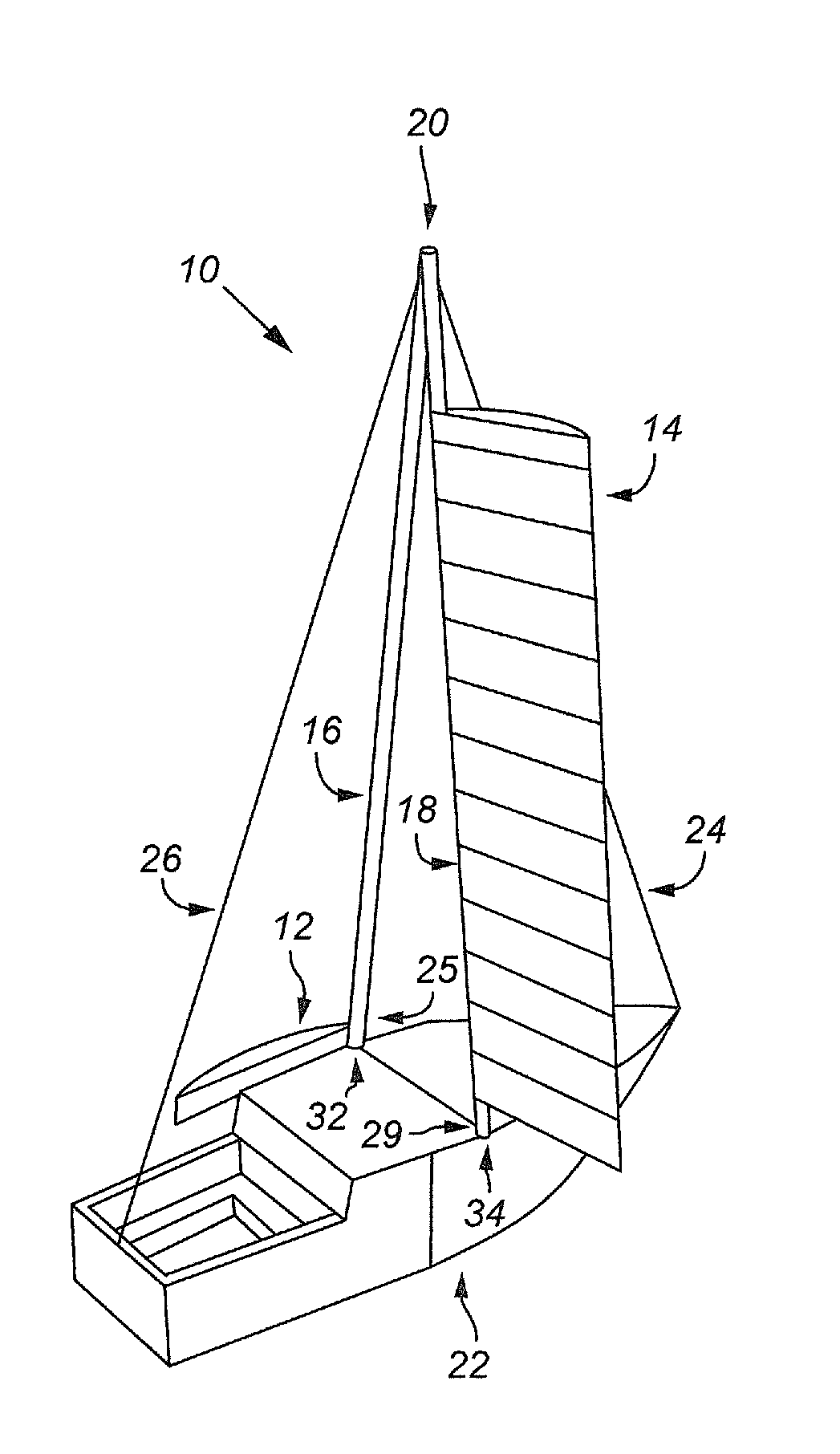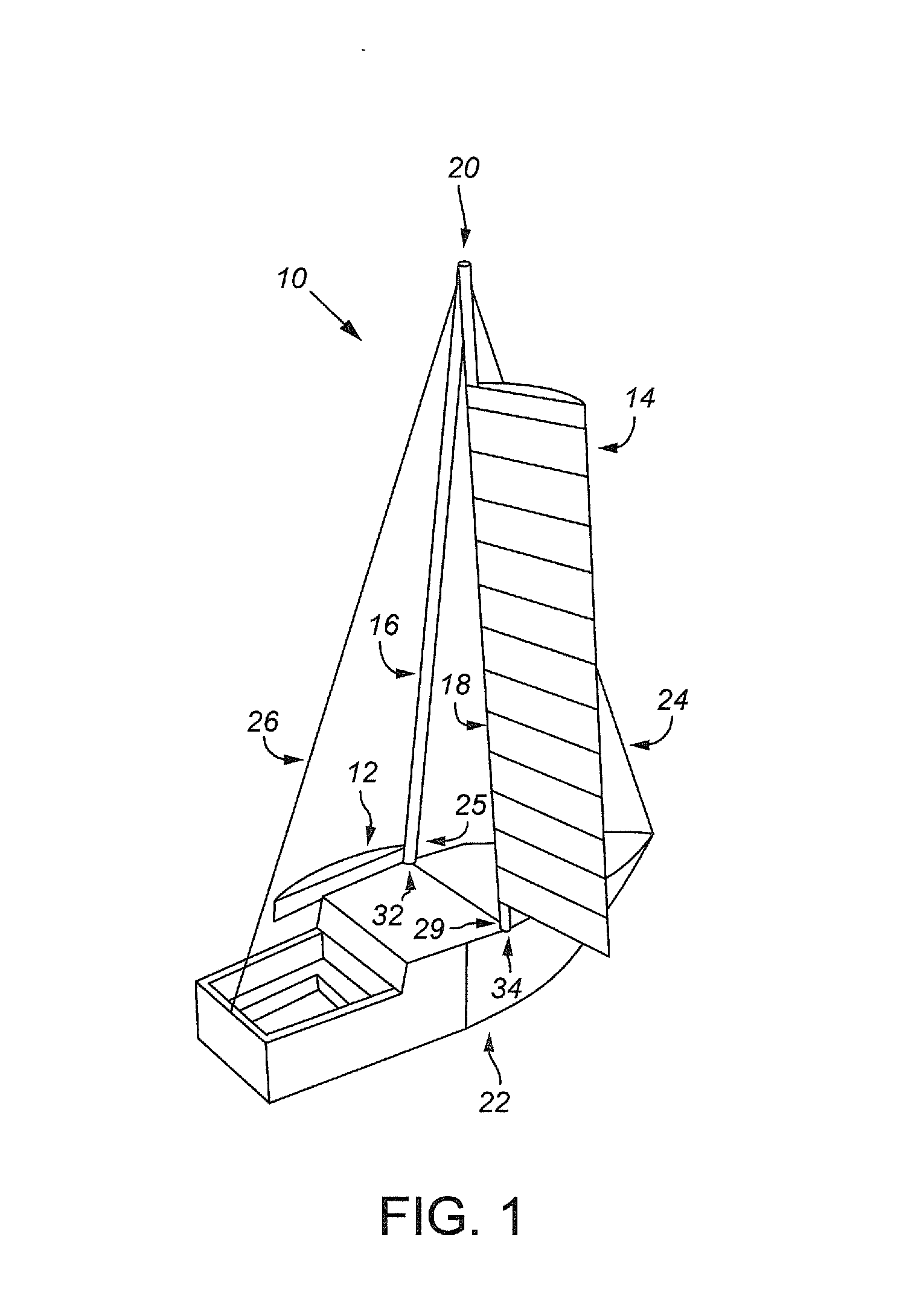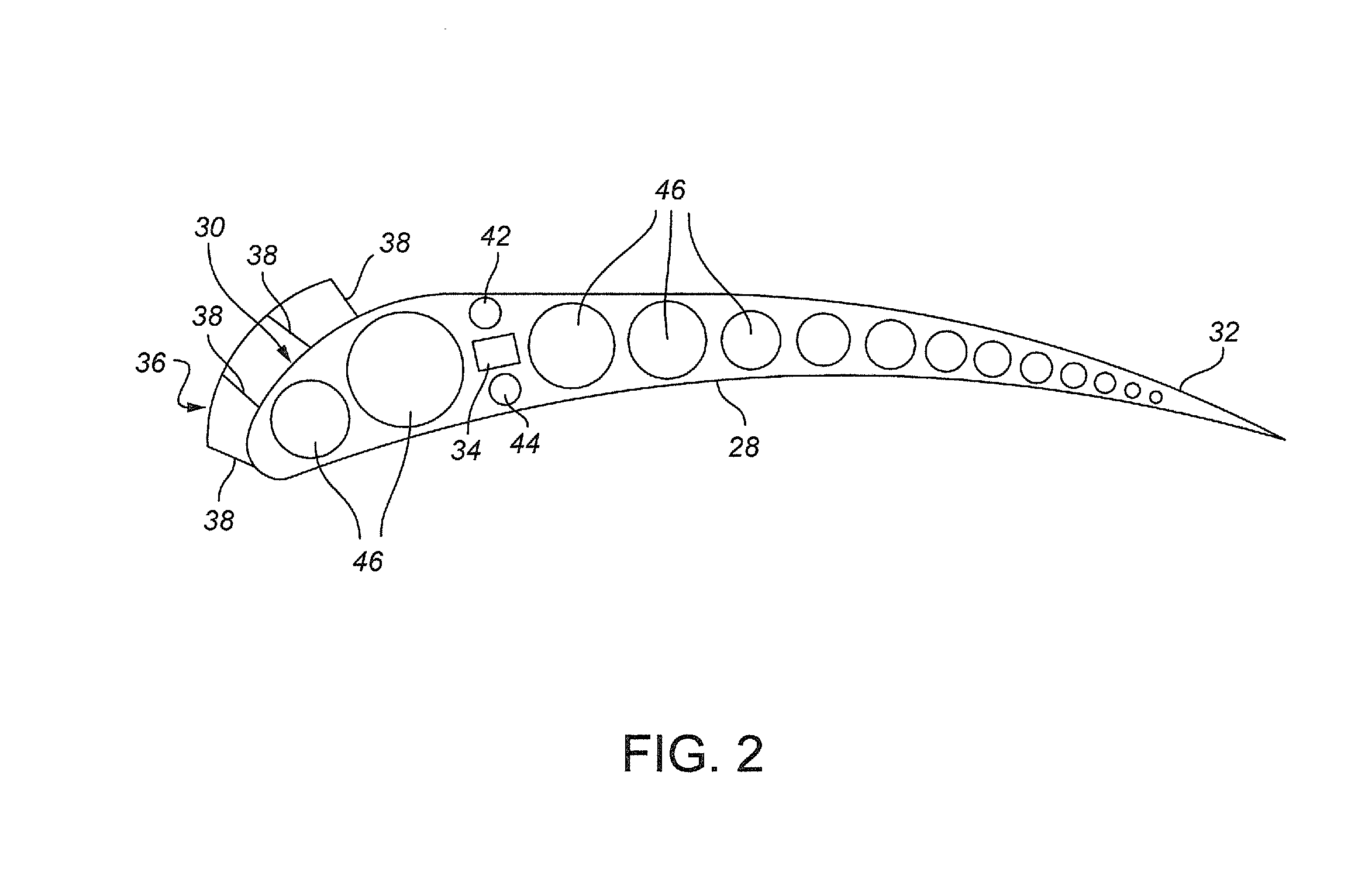Twin asymmetrical wing sail rig
a technology of asymmetrical wing and asymmetric sail rig, which is applied in the field of sailing rigs, can solve the problems of reduced sailing rig efficiency, heavy support structure, and high drag
- Summary
- Abstract
- Description
- Claims
- Application Information
AI Technical Summary
Benefits of technology
Problems solved by technology
Method used
Image
Examples
Embodiment Construction
[0039]Unless otherwise defined, all technical terms used in connection with the disclosure shall have the meanings that are commonly understood by those of ordinary skill in the art. Further, unless otherwise required by context, singular terms shall include pluralities and plural terms shall include the singular.
[0040]There are at least three major engineering problems with a traditional wing sail. First, there are no mechanisms for rotating a wing sail 360 degrees around a stayed rig. Unstayed rigs can be used for wing sails but they need to be stronger and are made of very expensive exotic materials. For an unstayed rig, the foot of the mast must rotate without moving side to side, which is complex, prone to shock-loading damage, and the resulting mechanisms are very heavy and expensive. In addition, the mechanism to change the airfoil shape of a wing sail to the opposite side when changing tacks requires a lot of internal mechanisms, which adds weight to the sail and can easily ...
PUM
 Login to View More
Login to View More Abstract
Description
Claims
Application Information
 Login to View More
Login to View More - R&D Engineer
- R&D Manager
- IP Professional
- Industry Leading Data Capabilities
- Powerful AI technology
- Patent DNA Extraction
Browse by: Latest US Patents, China's latest patents, Technical Efficacy Thesaurus, Application Domain, Technology Topic, Popular Technical Reports.
© 2024 PatSnap. All rights reserved.Legal|Privacy policy|Modern Slavery Act Transparency Statement|Sitemap|About US| Contact US: help@patsnap.com










